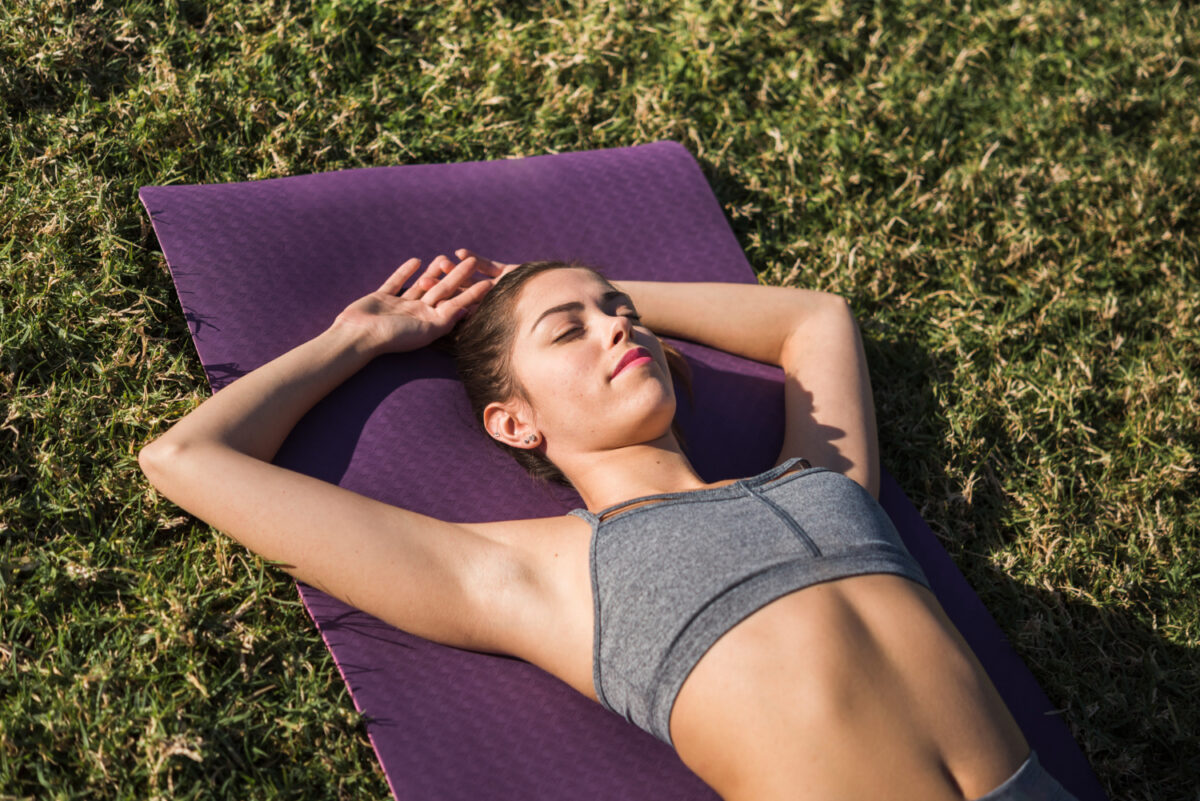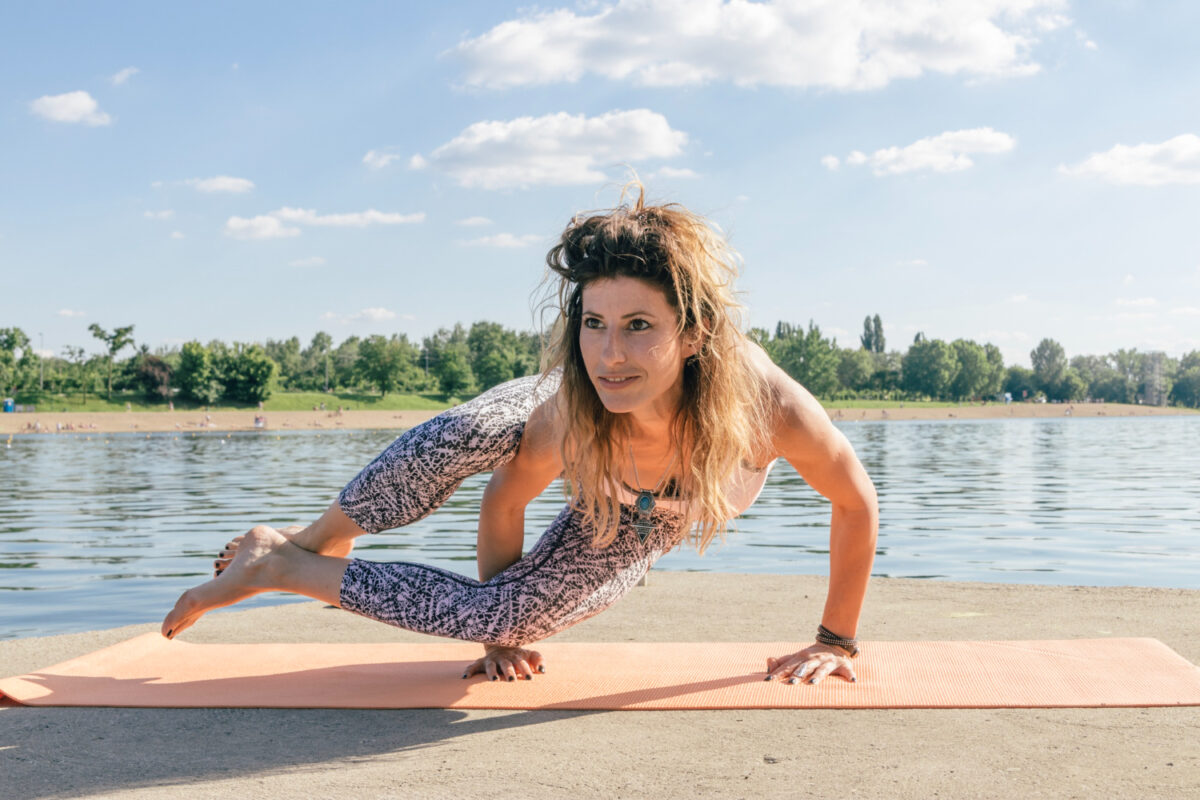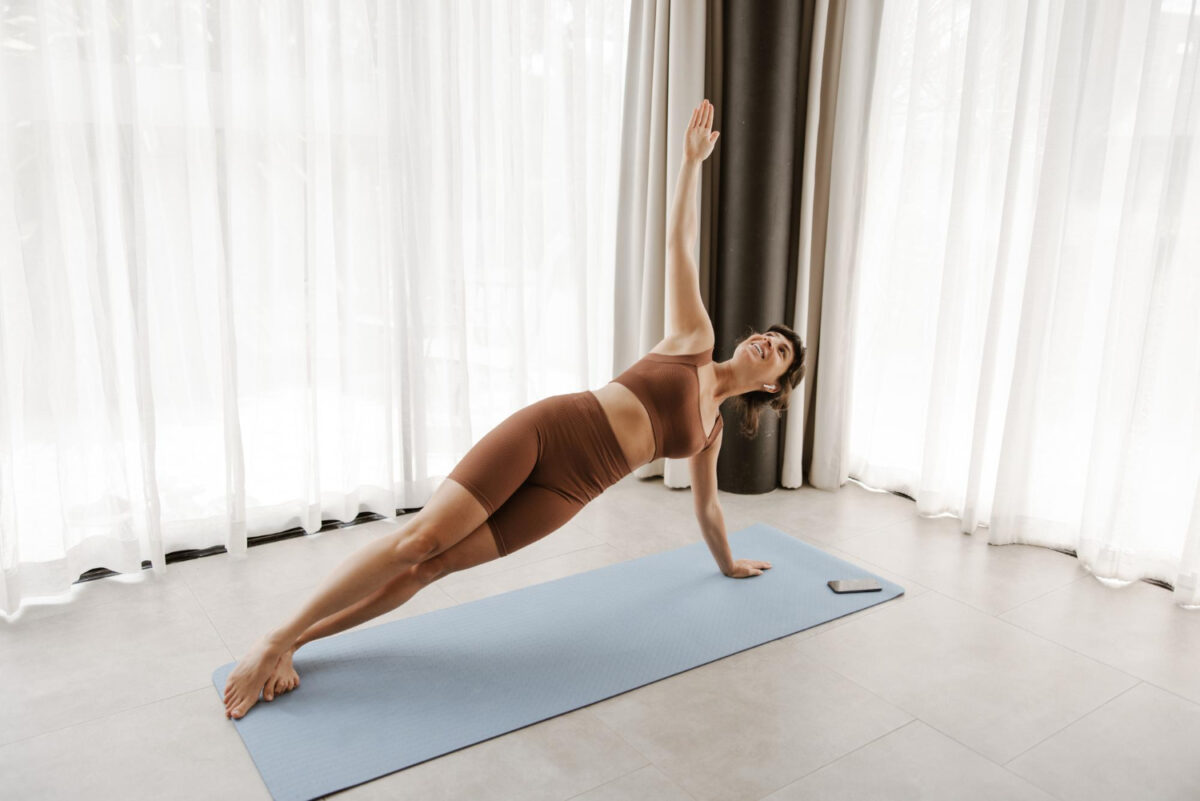Improve sleep With a good rest it is one of the healthy habits that you should take into account for your health. Today from Sincronia Yoga we propose positions of yoga to improve sleep and, therefore, get a good rest.
Yoga to improve sleep
Yoga practices can be focused based on the needs of each practitioner, from a vigorous practice that helps you focus, increase energy and start your day, to another one of rest, internalization and stress relief.
As we have already told you in other articles, yoga has a therapeutic aspect highly beneficial for health. This includes a series of tips, postures and rhythms that will help you find a good rest.
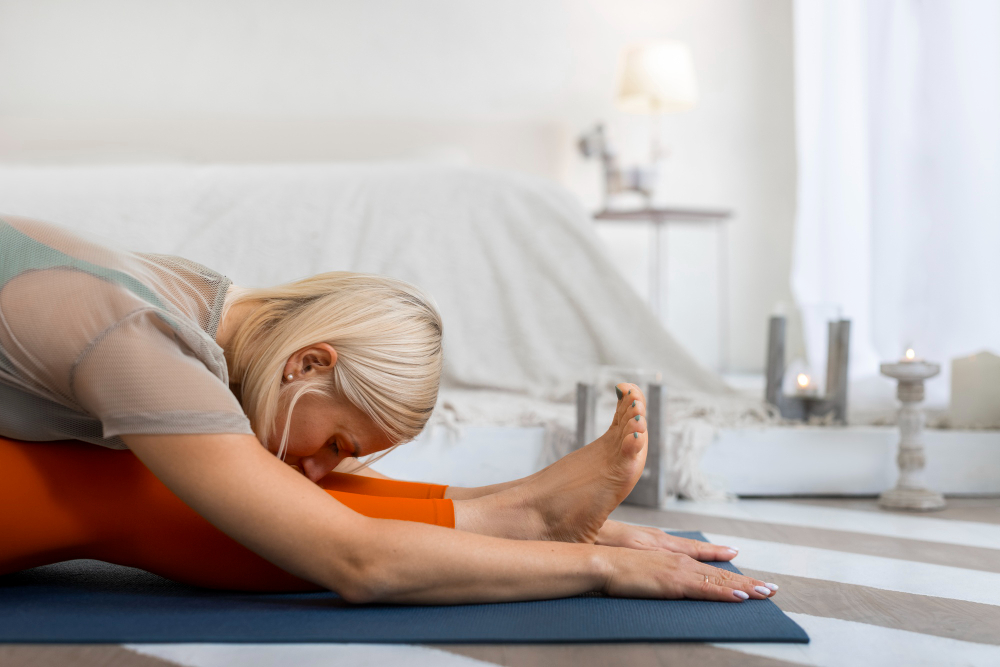
Nearby tips to improve sleep
- Practice physical activity or sport at varying intensities throughout your week.
- Eat while there is sunlight Or if this is not possible, make larger meals in the morning and noon and lighter meals in the afternoon.
- Beam intense activities first thing in the morning and calmer activities late in the morning of the day to help your body enter a state of rest.
- Remind the body that it can You are doing nothing, with walks, contemplative stops, relaxing readings, etc.
- Empty your mind before sleep.
- Don't look at screens at least 30 minutes before your bedtime.
- Create a relaxing daily routine that tells the body and mind that the time for your daily rest has arrived.
Unload the mind and relieve physical tension
Yoga focused on improving sleep and Enjoying a good rest is based on the principles of unloading the mind and relieving physical tension..
For this, yoga incorporates meditative practices, As the pranayama, which we propose at the end of this article, and that will help you unload your mind of thoughts and mental noise and thus be able to face a longer and deeper rest.
In addition to exercises designed to activate, mobilize, decompress and make your entire body more flexible with the aim of bringing it to a state of deep relaxation. Rest is also felt with the degree of physical relaxation that the body can reach.
Yoga postures to improve sleep
In a yoga practice to improve sleep it is important to go from more to less. A good proposal would be: after warming up the joints, start with a vinyasa at different rhythms, like the sun salutation, surya namaskar, to activate us and awaken the whole body. Next, go to the ground with the postures that promote good rest, like the ones we propose below. Finally, close with a meditation, relaxation or pranayama about 15 minutes.
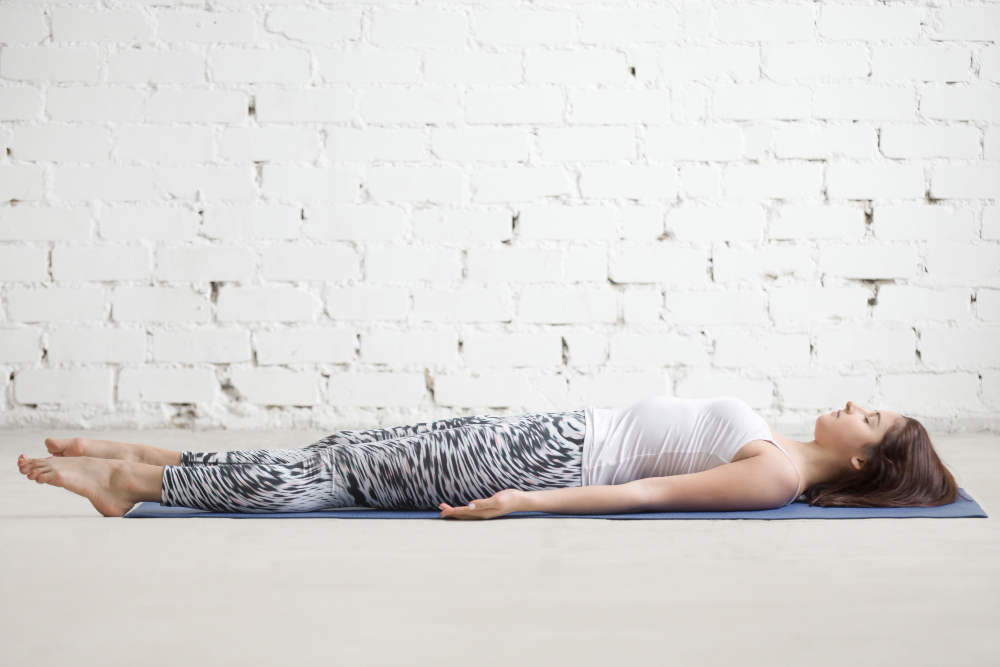
Pavana muktasana
The first posture that we recommend for a yoga practice focused on improve your sleep, is the position of wind release. Although its name is curious, this posture helps us activate the prana either air located at the base of the body. Giving us more connection with the earth and thereby promoting a good rest.
It is very simple to do it. Lie on your back on the floor with your Stretched legs. In one inhalation bend left knee and you hug her to the chest. Reposition your entire body by bringing the chin to chest so that the entire spine is lengthened and breathe calmly into your navel for a minute, focusing on the sensations of the lower back area. Repeat with the right leg for another minute.
Tadaka mudra
The fallen tree pose to stretch and expand from softness. This yoga pose will help you relax your body and thereby improve your sensations for a good sleep.
Lie on your back, with your entire body long, legs stretched and together, feet together, arms close to the body and chin in so that your cervical spine stretches from behind. In one inhalation, roll your arms on the floor until you can join your hands above your head. Feel as if someone is pulling your feet and hands in opposite directions.
Stay in the posture 4 or 6 long breaths. After that, lower your arms in front of your body, ensuring that both arms lower at the same time. Repeat maintaining the posture between 6 and 10 breaths long, go back down and do one last repetition, maintaining, if possible, a few 20 to 24 breaths long.
At the end of the series, raise your knees to your chest one at a time and hug them for a minute to compensate for your lumbar curvature.
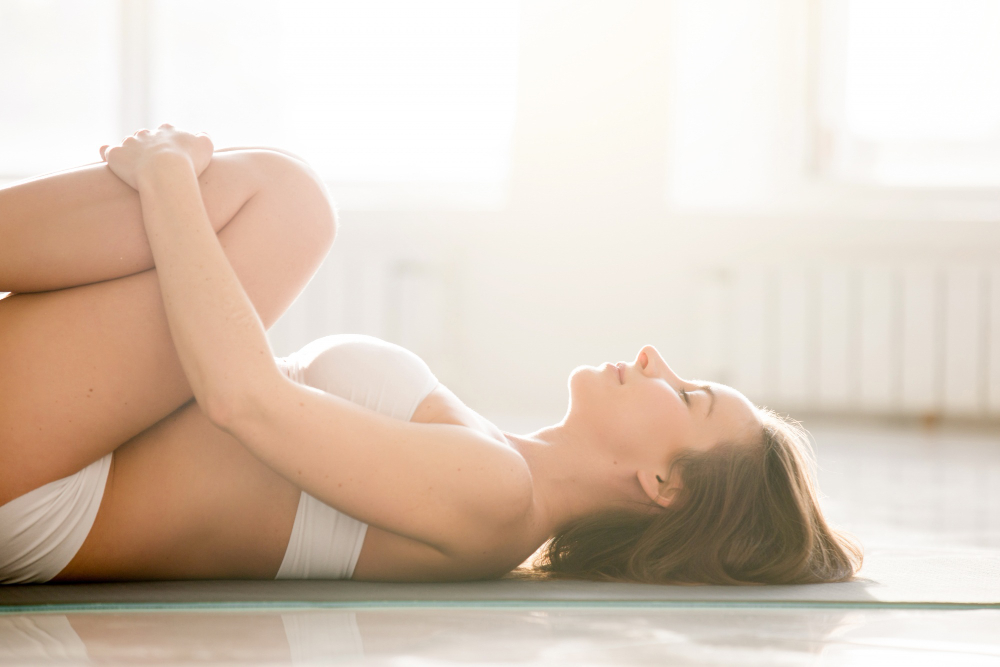
Jathara parivritti (Feldenkrais style)
The gentle twists on the floor to relieve deep tension in the spine, neck and cervical spine will help you in your search for a good rest. In this variant today we propose an exploration of softness inspired by the practices of Feldenkrais, where slowness and time are your allies.
Lie down on the floor on your left side. Arms stretched forward on the floor, one on top of the other, with palms together. Legs bent in right angle, as if you were sitting. If this were very uncomfortable for your cervical spine lay down a blanket under your head.
Start to slide your right hand over your left, your right shoulder being the one that stretches your entire arm back and comes back. Do this slide first only from the tips of the fingers of the left hand to the heel of the hand and come back. It is always your right shoulder that directs the movement, softly, with time, at your own pace. After several repetitions, allow the movement to now reach the elbow of the left arm and go back to your fingertips.
You will feel that your right shoulder and arm have more range of motion now. After several repetitions, bring the movement up to your heart and if you feel that way, let your head freely follow the back and forth movement. You will see that the right elbow is leading now.
After a few more repetitions, make your right arm extend completely on the floor to the right, leaving you with the cross arms. Now when you return you are going to do it by rolling this arm on the floor, above your head, until you reach your left hand again to repeat the movement. Your whole body begins to follow the movement Now, head, knees that want to separate, very freely and very gently. Let your whole body find the organic way to open and collect.
End the sequence allowing the knees to completely change sides and now stand on your side, on your right side, in the initial position of arms and legs together to repeat the entire slide from the right now.
By closing both sides, hug your legs to your chest in a fetal position on the side to integrate all the expansion from the softness.
Vinyasa of balasana
Soft closing sequence to integrate the practice and give time for slowness and rest to settle into your body.
- Sit on your knees on your heels in the posture of vajrasana or the Diamond.
- In a inhalation rise to your knees, opening your arms and extending forward into a standing pose. nagasana.
- As you exhale, go down to sit on your heels and lower your head to the floor with your stretched arms forward on the floor, baby pose or balasana.
- As you inhale, get on your hands and knees to come up to the cat-cow posture with head up, chakravakasana.
- As you exhale, move into the posture of pyramid or downward facing dog, adho mukha svanasana, stretching your entire back, even if your heels don't touch the ground.
- Backwards. To the inhale, return to the cat-cow.
- To the exhale, back to the baby.
- As you inhale, return to expansion of nagasana.
- Close the turn in the seated diamond on the knees.
You can repeat the sequences a few 6 turns and in the last repetition stay in the baby's position or balasana, adapting it for your comfort. Bringing your arms back so that they rest on the floor and opening your knees a little to each other to have more space for breathing. Maintain the posture for 2 or 3 minutes and exit closing the rest of the turn until returning to the initial diamond posture.
Pranayama of the bumblebee
Yoga and other traditions use the sound to change the mental state. One of the breaths either pranayama that has this purpose is known as bumblebee breathing either bhramari pranayama.
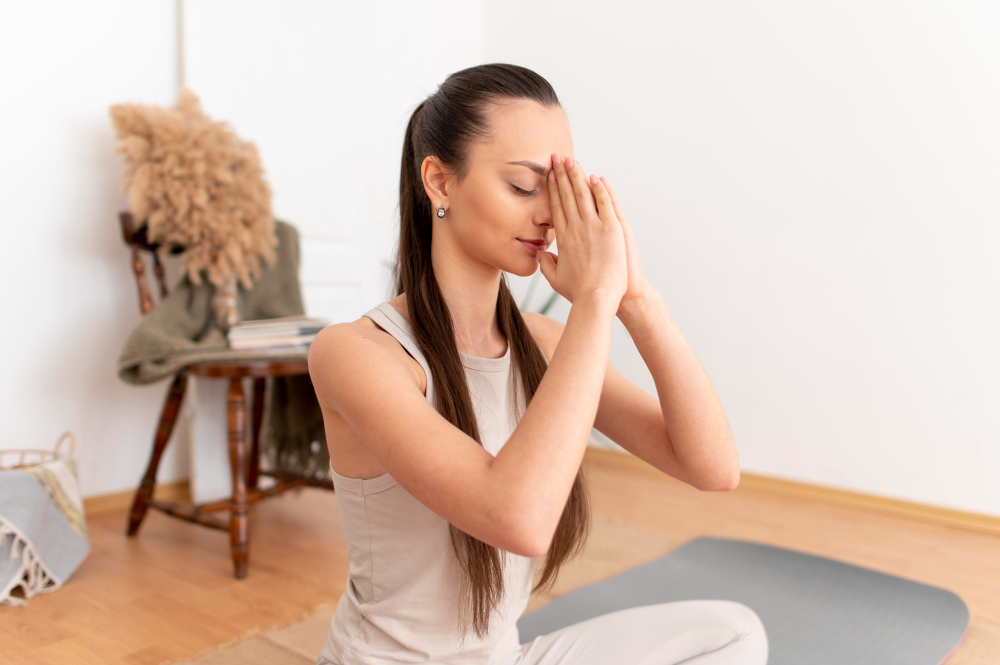
Sit in a comfortable posture for you, with your legs crossed or on a stool. The posture that allows you to have your back straight and relaxed at the same time.
You are going to cover your ears, you can do it in a simple way with your index fingers pushing the “tragus” or cartilaginous part what is before the ear; or you can do the mudras of the eight doors which consists of covering the ears with the thumbs, resting the index fingers on the eyebrows, the middle fingers on the eyelids, the ring fingers near the nose and, finally, the little fingers on the corner of the lips. Let your hands be in the position they are in, let your arms rest without raising your elbows so that it is more comfortable and you can hold the position for a few minutes.
Inhale through your nose, slowly, letting your lungs fill. When you exhale through your mouth, vibrate your lips with a “bbbbb” or “vrrr” sound, it will remind you of the sound of a bumblebee. Until you empty all the air. Continue for 5 minutes.
Let the reverberation of the sound emptying you inside.
After the five minutes, lower your arms. You will feel how the sound still persists. stay in meditation contemplating the sound and silence inside you.
I only have to invite you to practice yoga to improve your sleep with the good guidance and company of the teachers of Sincronia Yoga.

